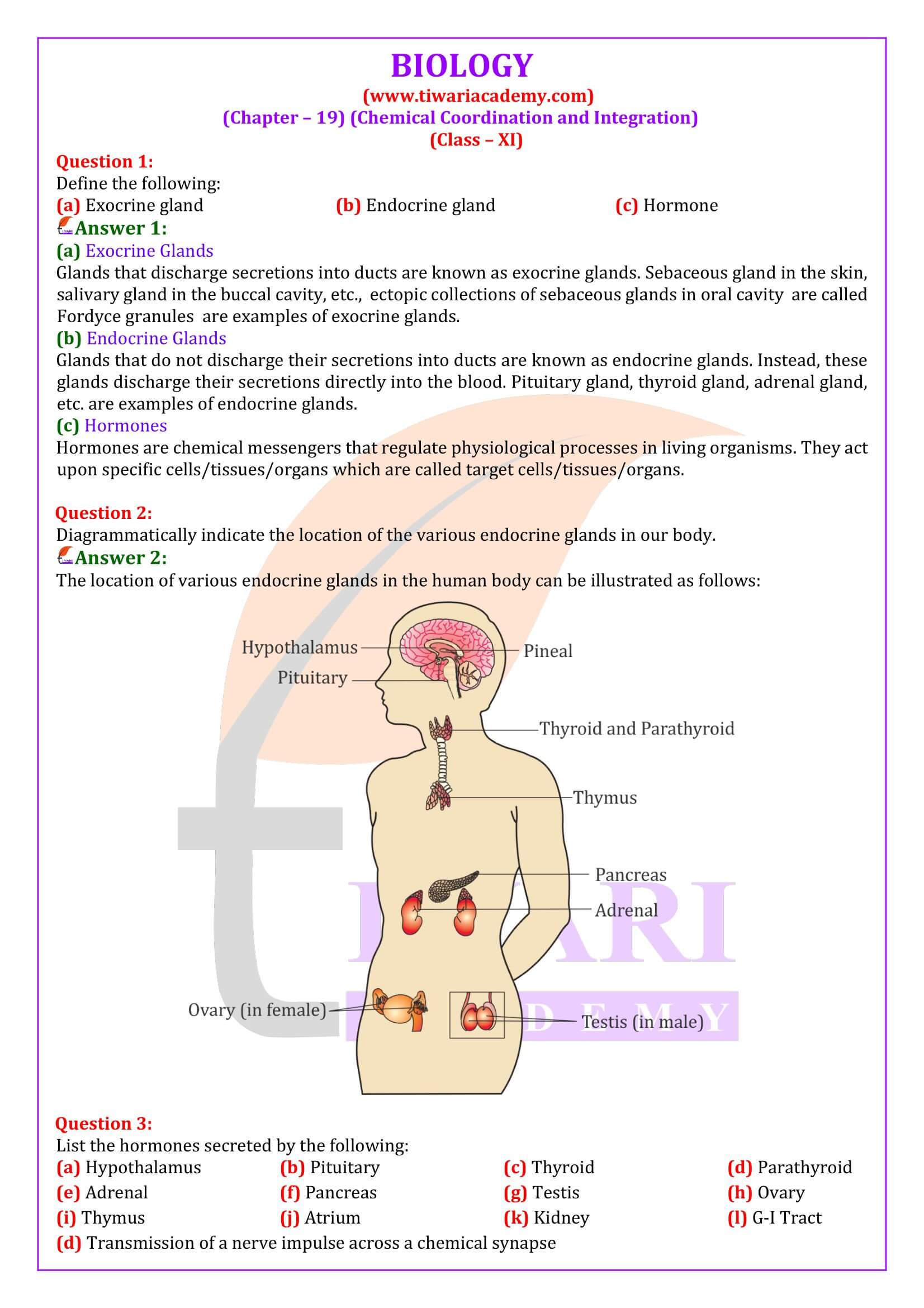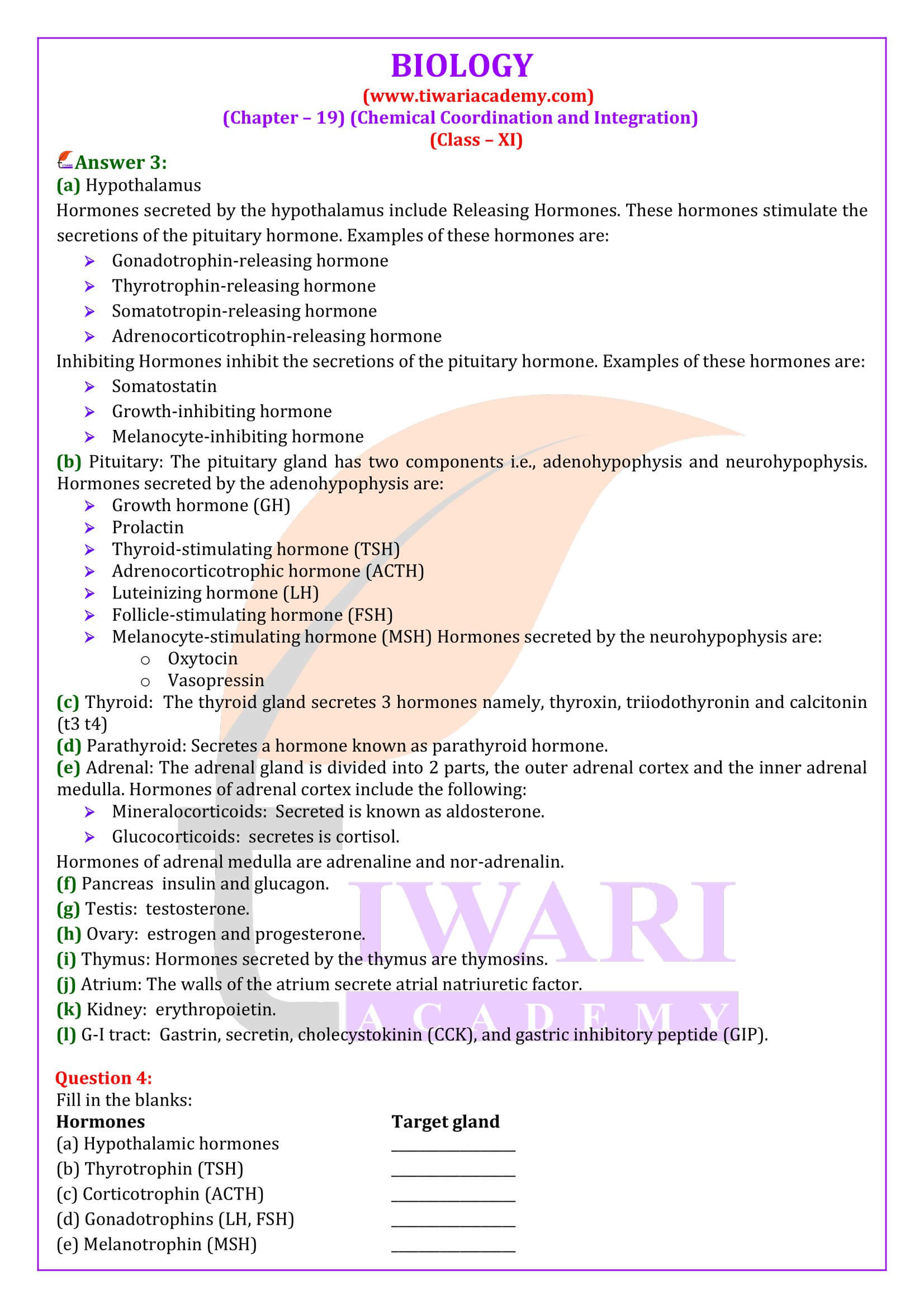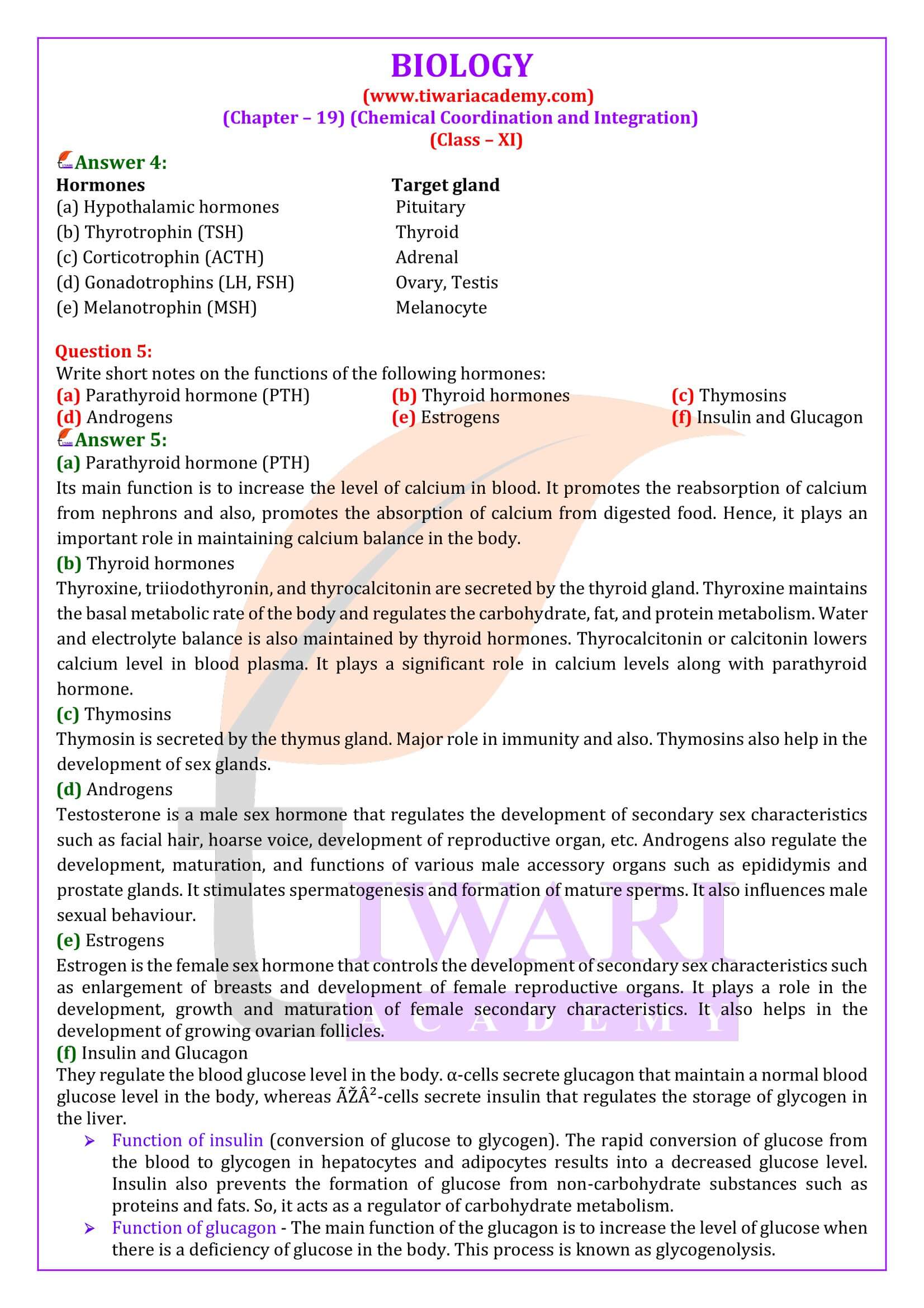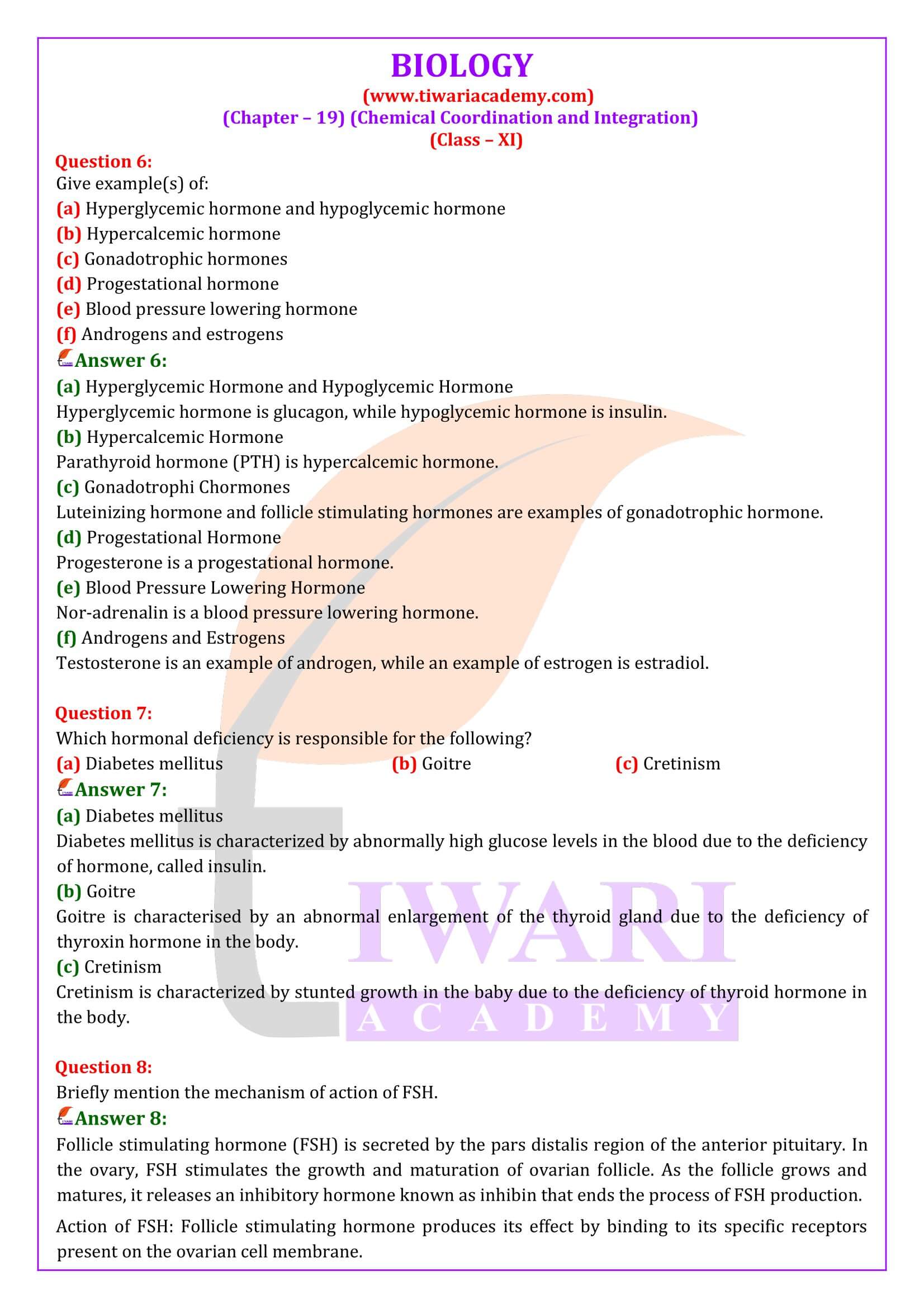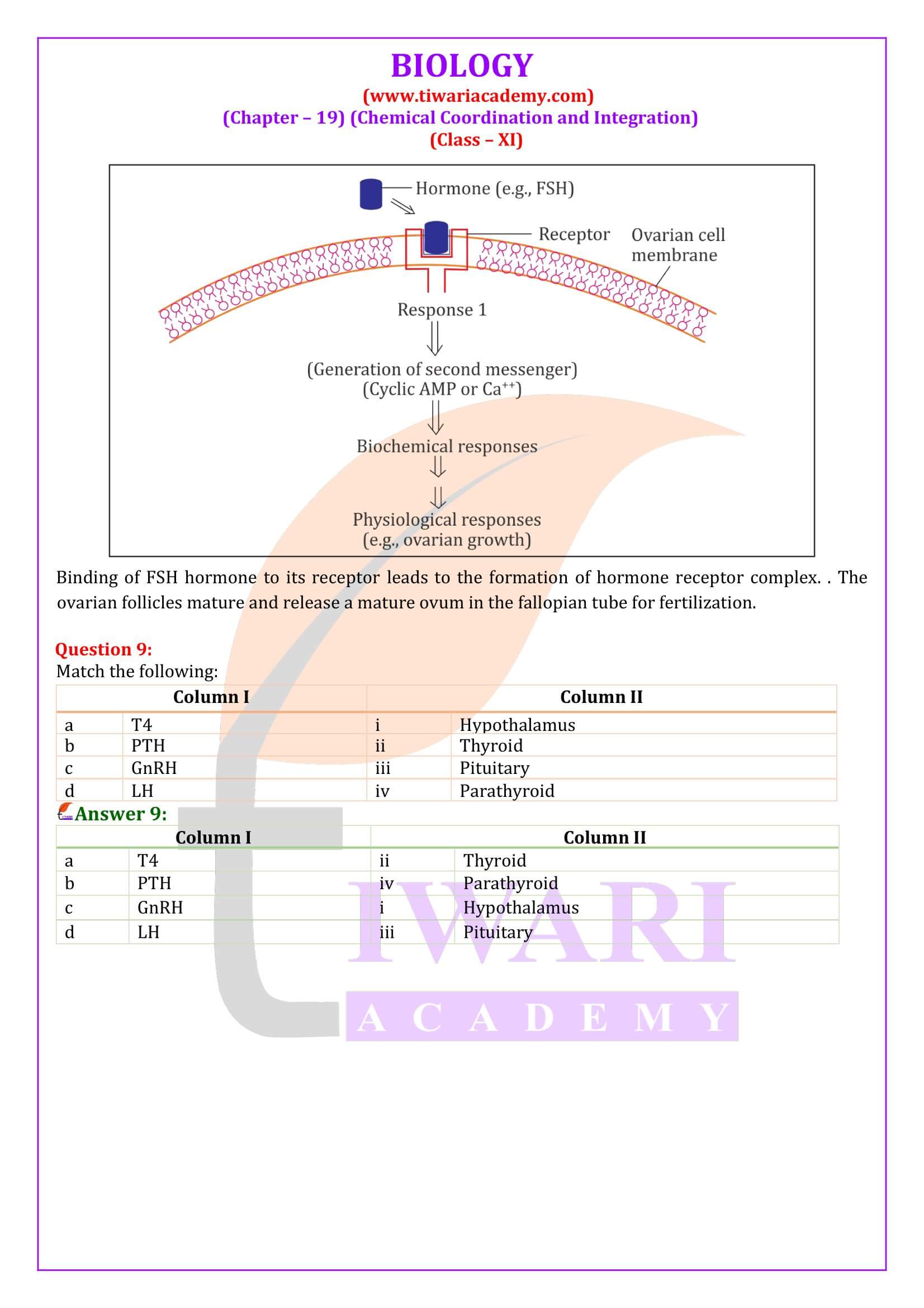NCERT Solutions for Class 11 Biology Chapter 19 Chemical Coordination and Integration in Hindi and English Medium revised and updated for new academic session 2025-26. Download CBSE Solutions of other subjects of class 11 also Based on latest NCERT Books updated for new academic session 2025-26. Visit to Discussion Forum and join the world of knowledge.
NCERT Solutions for Class 11 Biology Chapter 19
Class 11 Biology Chapter 19 Chemical Coordination and Integration Solutions
| Class: 11 | Biology |
| Chapter 19: | Chemical Coordination and Integration |
| Content: | Study Material and Exercises Solutions |
| Content Format: | PDF, Videos, Text and Images |
| Academic Session: | Year 2025-26 |
| Medium: | English and Hindi Medium |
Class 11 Biology Chapter 19 Solutions in English
NCERT Solutions for Class 11 Biology Chapter 19 in PDF format to free download for session 2025-26. Join the discussion forum to ask your doubts related to CBSE as well as NIOS board and discuss the questions asked by other users. Download NCERT Books and Offline Apps based on latest CBSE Syllabus 2025-26.
Important Notes on Chemical Coordination & Integration
HYPOTHALAMUS
Two types of hormones released are
1. Releasing hormones: Simulate secretion of pituitary hormones, e.g., Gonadotropin releasing hormone stimulates pituitary gland to synthesise gonadotrophins.
2. Inhibiting hormones: Inhibit secretions of pituitary hormones, e.g., Somatostatin inhibits secretion of growth hormone.
Thyroid Gland
1. Has two lobes on either side of trachea interconnected by isthmus (connective tissue).
2. Composed of follicles and stromal tissues.
3. Follicular cells synthesis thyroxine (T4) and tri-iodothyronine (T3).
4. Iodine is necessary for normal functioning in of thyroid.
THYMUS GLAND
1. Located on dorsal side of heart and aorta.
2. Secrete peptide hormones called Thymosins which play role in differentiation of T-lymphocytes (help in cell mediated immunity.)
3. Thymosins also produce antibodies and provide humoral immunity.
4. Immunity of old people usually becomes weak as thymus gets degenerated with age.
Parathyroid Gland
1. Present on back side of thyroid gland. Each lobe of thyroid gland has its one pair.
2. Secrete peptide hormone called parathyroid hormone (PTH) which increases calcium levels in blood so called hypercalcemia hormone.
3. PTH stimulates bone resorption, and reabsorption of calcium from blood and reabsorption of calcium by renal tubules, thus increasing blood Ca++ level.
PITUITARY GLAND
1. Located in bony cavity called as sella tursica.
2. Attached to hypothalamus by a stalk.
3. Divided anatomically into: Adenohypophysis and Neurohypophysis.
4. Hormones released from hypothalamic neurons reach anterior pituitary through portal system.
5. Posterior pituitary is under neural control of hypothalamus.
Testis
A pair of testis composed of seminiferous tubules and interstitial cells is present in the scrotal sac of males. Leydig cells (interstitial cells) produce androgens (mainly testosterone) which regulate development and maturation of male accessory sex organs, formation of secondary sex characters and play stimulatory role in spermatogenesis. Male sexual behaviour (libido) is influenced by androgens.
Important Questions on 11th Biology Chapter 19
Define Exocrine gland.
Exocrine Glands Glands that discharge secretions into ducts are known as exocrine glands. Sebaceous gland in the skin, salivary gland in the buccal cavity, etc. ectopic collections of sebaceous glands in oral cavity are called Fordyce granules are examples of exocrine glands.
What are Endocrine glands?
Endocrine Glands Glands that do not discharge their secretions into ducts are known as endocrine glands. Instead, these glands discharge their secretions directly into the blood. Pituitary gland, thyroid gland, adrenal gland, etc. are examples of endocrine glands.
What do you understand by Hormones?
Hormones Hormones are chemical messengers that regulate physiological processes in living organisms. They act upon specific cells/tissues/organs which are called target cells/tissues/organs.
Hormones secreted by tissues which are not endocrine glands
1. Heart: Atrial wall secrets Atrial Natriuretic factor (ANF) which decreases blood pressure by dilation of the blood vessels.
2. Kidney: Juxtaglomerular cells secretes erythropoietin which stimulates erythropoiesis (RBC formation).
3. Gastro-intestinal tract: it secrets four peptide hormones.
